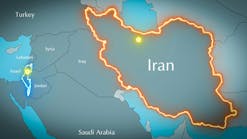India's grim necessity for higher oil and gas imports in the near future is forcing it to decontrol prices and open the door even wider to foreign exploration.
The national budget for fiscal 1996-97 had forecast a healthy rise in crude production to 761,000 b/d, but instead output appears headed for a 70,000 b/d drop.
Natural gas production is forecast to increase by 35 MMcfd to 2.275 bcfd but will remain well short of demand, about 3.08 bcfd.
Some forecasts say India's refined products demand could soar to 3 million b/d by 2010, compared with about 1.5 million b/d in fiscal 1996-97 (OGJ, Feb. 12, p. 19).
Prime Minister H.D. Deve Gowda disclosed the government's response to its energy crisis at a recent International Energy Conference in Goa, India. The meeting brings major oil consumers and producers together.
He said India would continue with its transition toward decontrolled petroleum products prices. Major products remain under price controls, and the government has been reducing tariffs on oil products as a preliminary step to decontrol.
Leasing reforms
Deve Gowda also said India is considering changes in its exploration licensing policy to "ensure a level playing field among private companies and national oil companies."
It opened its doors to exploration by international oil firms in 1991, but results have been spotty.
The few firms that were lured have invested $1.8 billion and found 30 small or medium-size fields. But that is clearly not enough.
The government now is considering measures to encourage exploration of higher risk areas that are geologically complex or in deep water, in hopes of finding giant fields.
India is proceeding with plans to nearly double its refining capacity to about 2.2 million b/d from 1.2 million b/d.
Proposals to build or expand refineries are expected to total at least $10 billion. Saudi Aramco is discussing a joint refinery venture as large as 180,000 b/d in Punjab.
The new refineries also will require large investments in distribution infrastructure such as tanks, terminals, and pipelines.
India also is seeking liquefied natural gas imports from all possible sources, including Iran, Qatar, and Malaysia.
Positive signs
It is little wonder that international firms have been deterred by India's petroleum subsidies, its conservative approach to opening its markets, its highly political atmosphere, and its notorious bureaucracy.
Change will be slow in India, but it can occur. That was proven last week when Enron Corp. resumed building a $2.5 billion power plant at Dabhol (see Industry Briefs, pp. 24-25). Political pressures and lawsuits had delayed the project 16 months.
The fact that Dabhol is back on track shows India is determined to solve its energy crisis, and has recognized that participation by foreign firms is the lesser of two evils.
Copyright 1996 Oil & Gas Journal. All Rights Reserved.


